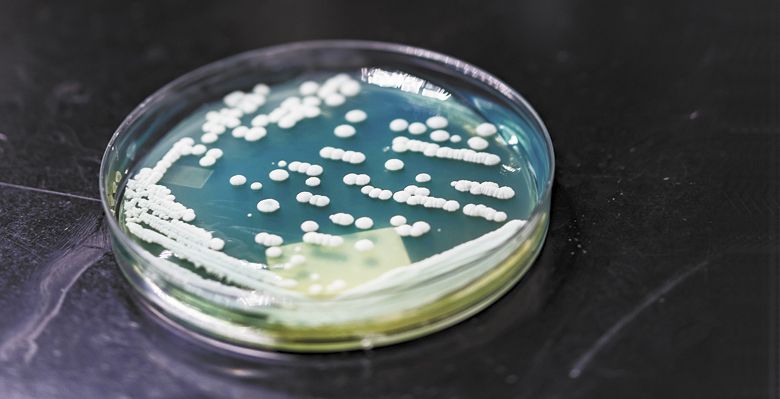Liquid Assets
Wyeast Laboratories expands to wineries
For Jenny Logsdon, fermentation science is her world, her livelihood. After studying food science and fermentation at Mt. Hood Community College, she worked growing liquid cultures for an agricultural company. Eventually, Jenny started a business in her Hood River home, producing liquid yeast for emerging craft and home brewers. In fact, the company, Wyeast Laboratories — the name derives from Wy’east, the native name for Mount Hood — helped pioneer liquid yeast in 1986.
“Brewers had little choice in yeast then,” Jenny explained. “The dried yeasts for beer were limited to a few ale and lager strains.” The quality was often low because dried yeast was prone to bacterial contamination. She added, “Liquid yeast is more reliable, much more diverse, easier to control and always fresh with high viability. The options are vast.” The main challenge with liquid yeast remains storing it at the proper temperature: cool but not freezing.
Trademarked, proprietary packaging called Activator, which features an inner nutrient pouch that activates the yeast once burst, makes the product accessible and convenient to sell. The brewing community nicknamed it “Smack Pack,” and the moniker stuck — see Smack-Pack Activator System on Wyeast’s website, wyeastlab.com.
With such innovation and high-quality products, it’s easy to see how Wyeast is thriving and growing with close to 50 employees, including Jenny’s three adult daughters, 30-year old triplets who manage different aspects of their mom’s successful business — she took over full ownership in 2009.
Although brewers are still the primary clients — 70 percent are commercial; 30 percent, home brewers — Wyeast yeasts are often used in cider, wine, mead, spirits and saké. The processing facility in Odell, outside Hood River, is near capacity, and a major expansion project is in the works. Increasing sales to wineries and other producers goes hand-in-hand with the company’s vision. “We look forward to bringing on more technical support for the wine industry,” Jenny said.
Tamara Logsdon, Wyeast’s quality control lab coordinator and brand manager, says many of their customers “bank their yeast strains” with the company. She describes the process: “Yeast strains are sent to us as isolated colonies. We prepare them for banking and maintain them using the same protocol as for the Wyeast Culture Collection, with ultra-low temperature storage, slant backup and management. Clients can order their strains at any time, at the same commercial specification and quality assurances that we guarantee for our liquid cultures.”
Katrina Logsdon, who works in the production department as a cellar operator, plans to study winemaking this fall in the Walla Walla Valley. She has experience in wine production, working harvest for two Australian wineries and Maryhill Winery in the Columbia Gorge. She will work in New Zealand’s largest wine-producing region for this year’s crush.
“The challenge with liquid yeast and wine is timing,” she explained. “We guarantee our commercial liquid yeast for two weeks from the arrival date, and it’s difficult for wineries to plan that tightly since harvest dates change so frequently.”
More often, wineries will purchase malolactic cultures from Wyeast. These cultures soften high-acid wines, adding complexity by reducing the sharp malic acid to a smoother, softer lactic acid. Malolactic cultures are frequently used in Chardonnay to achieve a smooth, buttery flavor.
Tamara says, “Our two malolactic strains, isolated by Oregon State [University] researchers, are indigenous to the Willamette Valley. They have been part of our collection for almost 30 years, since the early days of Wyeast. Originally, we paid royalties on them for two years before they were officially ours. They outperformed other commercial strains tested under an extensive variety of conditions. They were also proven to complete malolactic fermentation in half the time as naturally occurring ones. Best of all, they produce good quality, sound wines.”
Also popular with wineries is Wyeast’s Wine Nutrient Blend for healthy fermentation. “Musts are often deficient in vitamins, minerals and micronutrients that yeast requires to carry out their basic functions,” Tamara explained.
“The investment with wineries is much higher than with brewing,” said Jenny, “with only one fermentation a year.” For wineries, she plans to bring on a specialist who understands the science and craft of winemaking. Jenny is not simply interested in selling a product but sharing knowledge and problem solving with customers.
The expansion plans for a state-of-the-art processing facility are now underway. The new building will replace the current processing facility, increasing efficiency and capacity. Currently, they ship products all over the U.S. and to 37 different countries.
Alisa Logsdon, who joined the company in 2014 after earning a degree in business and leadership from the University of Puget Sound, has been appointed project manager for the expansion. “I am excited for our construction project and to finally see the outcome from the success of our internal growth and development over the past several years,” she said.
“In terms of winery clients, the expansion will improve our ability to accommodate both Northern and Southern Hemisphere harvest seasons better,” Tamara added. “It will allow us to meet the sensitive deadlines when a winemaker’s inoculum must be ready.”
With its emphasis on quality and service, and deep understanding of the business, Wyeast will, no doubt, continue to be an industry leader.











